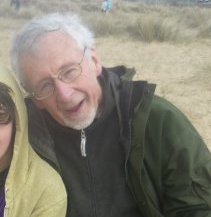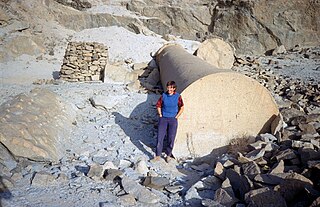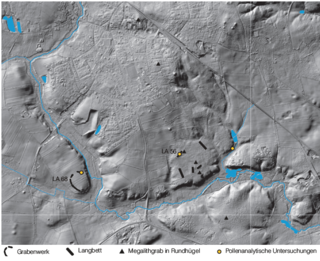Related Research Articles

Textile arts are arts and crafts that use plant, animal, or synthetic fibers to construct practical or decorative objects.

Paleoethnobotany, or archaeobotany, is the study of past human-plant interactions through the recovery and analysis of ancient plant remains. Both terms are synonymous, though paleoethnobotany is generally used in North America and acknowledges the contribution that ethnographic studies have made towards our current understanding of ancient plant exploitation practices, while the term archaeobotany is preferred in Europe and emphasizes the discipline's role within archaeology.
Environmental archaeology is a sub-field of archaeology which emerged in 1970s and is the science of reconstructing the relationships between past societies and the environments they lived in. The field represents an archaeological-palaeoecological approach to studying the palaeoenvironment through the methods of human palaeoecology. Reconstructing past environments and past peoples' relationships and interactions with the landscapes they inhabited provides archaeologists with insights into the origin and evolution of anthropogenic environments, and prehistoric adaptations and economic practices.

Roman gardens and ornamental horticulture became highly developed under Roman civilization, and thrived from 150 BC to 350 AD. The Gardens of Lucullus, on the Pincian Hill in Rome, introduced the Persian garden to Europe around 60 BC. It was seen as a place of peace and tranquillity, a refuge from urban life, and a place filled with religious and symbolic meaning. As Roman culture developed and became increasingly influenced by foreign civilizations, the use of gardens expanded.

Gordon Hillman was a British archaeobotanist and academic at the UCL Institute of Archaeology. He has been described as "a pivotal figure in the development of archaeobotany at the Institute of Archaeology at University College London, [who] through his research, publications and teaching had a major influence on the field worldwide."

In archaeology, a biofact is any organic material including flora or fauna material found at an archaeological site that has not been technologically altered by humans yet still has cultural relevance. Biofacts can include but are not limited to plants, seeds, pollen, animal bones, insects, fish bones and mollusks. The study of biofacts, alongside other archaeological remains such as artifacts are a key element to understanding how past societies interacted with their surrounding environment and with each other. Biofacts also play a role in helping archaeologists understand questions of subsistence and reveals information about the domestication of certain plant species and animals which demonstrates, for example, the transition from a hunter-gatherer society to a farming society.

Watermelon is a flowering plant species of the Cucurbitaceae family and the name of its edible fruit. A scrambling and trailing vine-like plant, it is a highly cultivated fruit worldwide, with more than 1,000 varieties.
Willem van Zeist was a Dutch archaeobotanist and palynologist. He was the director of the Biologisch-Archaeologisch Instituut at the University of Groningen.
The International Association of Physics Students (IAPS) is a non-profit umbrella organization for physics students associations. Its official seat is in Mulhouse, France in the headquarters of the European Physical Society. It was founded in 1987 in Debrecen, Hungary.
Klaus Oeggl is a retired Austrian botanist, and deals with palaeoecology and archaeobotany. He is well known for his studies on the life-circumstances and on the environment of the Neolithic glacier mummy „Ötzi“.
Glynis Eleanor Jones FBA is a British archaeobotanist, who is Professor of Archaeology at the University of Sheffield.

Marijke van der Veen, is a Dutch archaeobotanist and Emeritus Professor of Archaeology at the University of Leicester.

Naomi Miller is an archaeobotanist who works in western and central Asia. Miller is based at the University of Pennsylvania.
Maria Hopf was a pioneering archaeobotanist, based at the RGZM, Mainz.
Maria Follieri (1932-2012) was a pioneering Italian archaeobotanist and held the Chair of Palaeobotany at La Sapienza.

Lisa Lodwick was an archaeologist who studied charred, mineralised and waterlogged macroscopic plant remains, and used carbon and nitrogen stable isotope analysis to understand the crop husbandry practices of the ancient Romans.
Udelgard Körber-Grohne was a German archaeobotanist.
The paleoethnobotany of the Mapuche focuses on archaeological evidence supporting plant use by past and present Mapuche populations collected from multiple sites in southern Chile and the Patagonia region of Argentina. Paleoethnobotany is the study of fossil and material remains from plants, mostly seeds and residues that can be analyzed from material remains. Data can be collected from archaeological sites with a particular interest in learning about the history of agriculture in a region or the use of plants for either subsistence or medicinal use. The Mapuche are an indigenous culture native to South America. The archaeological record has revealed that the Mapuche were present in modern-day south-central Chile and southwestern Argentina from at least 500-600 BC. It is also noteworthy, that while collectively the Mapuche use this endonym, there are often subsets of the culture that have more specific names based on geographic location as well as different ecological niches.

The site Albersdorf-Dieksknöll LA 68 is a causewayed enclosure of the fourth millennium BC in Albersdorf, district Dithmarschen, northern Germany. It is one of the three or four known enclosure sites in Schleswig-Holstein and of the 47 known causewayed enclosure of the Funnel Beaker Culture.
References
- ↑ "The IWGP Conferences | International Work Group for Palaeoethnobotany (IWGP)" . Retrieved 2022-08-01.
- ↑ "Who are we? | International Work Group for Palaeoethnobotany (IWGP)" . Retrieved 2022-07-22.
- 1 2 Van Zeist, W; Wasylikowa, K; Behre, K.-E. (1991). "Preface". Progress in Old World Palaeoethnobotany. Rotterdam: Balkems. pp. vii–ix.
- ↑ Bittmann, Felix; Mueller-Bieniek, Aldona (2008-11-12). "Proceedings of the 14th symposium of the international work group for palaeoethnobotany, Kraków 2007". Vegetation History and Archaeobotany. 17 (S1): 3–4. doi:10.1007/s00334-008-0197-z. ISSN 0939-6314. S2CID 128912659.
- ↑ Renfrew, J. (1973). Palaeoethnobotany: the Prehistoric Food Plants of the Near East and Europe. London: Methuen & Co Ltd. p. 3.
- ↑ "Who are we? | International Work Group for Palaeoethnobotany (IWGP)" . Retrieved 2022-08-01.
- ↑ Behre, Karl-Ernst (1992). "Editorial". Vegetation History and Archaeobotany. 1 (1). doi:10.1007/bf00190696. ISSN 0939-6314.
- ↑ Samuel, D (1998). "International Work Group for Palaeoethnobotany" (PDF). SAS Bulletin. 21 (1/2): 18–20.
- ↑ Greig, J (1983). "Which way is archaeobotanical research going? A review of the papers and posters at Groningen". Circaea. 1 (3): 79–81.
- ↑ "The IWGP Conferences | International Work Group for Palaeoethnobotany (IWGP)" . Retrieved 2022-08-01.
- ↑ "The IWGP Committee | International Work Group for Palaeoethnobotany (IWGP)" . Retrieved 2022-08-01.
- ↑ "start [Wikis an der CAU]". www.wikis.uni-kiel.de. Retrieved 2022-06-16.
- ↑ "Who are we? | International Work Group for Palaeoethnobotany (IWGP)" . Retrieved 2022-08-01.
- ↑ "Vegetation History and Archaeobotany - Springer". link.springer.com. Retrieved 2018-09-11.
- ↑ "Vegetation History and Archaeobotany, Volume 20, Issue 5 - Springer". link.springer.com. Retrieved 2018-09-11.